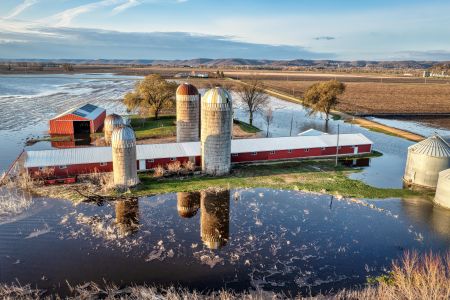Flooding can pose significant challenges for homesteaders, impacting crops, livestock, and infrastructure. However, with careful planning and preparation, you can mitigate the effects of heavy rainfall and keep your homestead thriving. Here are some essential strategies to help you handle flood weather effectively.
1. Understand Your Landscape
Before you can protect your homestead, it’s vital to understand your land’s drainage patterns. Pay attention to:
- Low Spots: Identify areas prone to flooding.
- Water Flow: Observe how water travels across your property during heavy rain.
- Soil Type: Different soils drain at different rates. Sandy soils drain quickly, while clay soils retain water.
2. Create a Flood Plan
Preparation is key to minimizing damage. Develop a flood response plan that includes:
- Emergency Contacts: Keep a list of local emergency services, neighbors, and relevant organizations.
- Evacuation Routes: Know how to safely exit your homestead if necessary.
- Resource Inventory: List your livestock, equipment, and supplies so you know what needs to be protected or moved.
3. Elevate Structures
If you’re building new structures, consider elevating them above potential flood levels:
- Foundations: Use concrete piers or raised foundations to keep buildings above water.
- Livestock Shelters: Ensure animal housing is elevated to protect against rising water.
4. Implement Water Management Techniques
Managing water flow can help reduce flooding risks:
- Swales and Ditches: Create shallow trenches to redirect water away from key areas.
- Rain Gardens: These absorb excess rainwater and help with drainage.
- Retention Ponds: If space allows, build a pond to hold excess water.
5. Protect Your Crops
Flooding can devastate crops, but there are steps you can take:
- Crop Selection: Choose flood-resistant crops, such as rice or certain varieties of beans, that can withstand temporary inundation.
- Raised Beds: Build raised garden beds to elevate plants above potential floodwaters.
- Cover Crops: Use cover crops to improve soil structure and reduce erosion.
6. Safeguard Your Livestock
Your animals are a priority during flood weather. Consider the following:
- Relocation: Have a safe location prepared where you can move livestock if flooding threatens their current shelter.
- Emergency Supplies: Stock up on food, water, and medical supplies to sustain your animals during and after flooding.
7. Stock Up on Supplies
Before flood season, gather essential supplies:
- Non-perishable Food: Keep a supply of food for your family and livestock.
- Water Containers: Ensure you have enough clean water storage.
- First Aid Kits: Assemble kits for both humans and animals.
8. Know When to Evacuate
Sometimes, despite your best efforts, evacuation may be necessary. Watch for weather alerts and take action if:
- Local Officials Advise It: Trust local authorities’ guidance on safety.
- Floodwaters Rise Quickly: If water begins to encroach on your homestead, don’t hesitate to leave.
9. Post-Flood Recovery
After the waters recede, it’s time to assess and recover:
- Damage Assessment: Check your property for structural damage, water contamination, and lost crops.
- Clean Up: Remove debris and standing water to prevent mold and pests.
- Soil Health: Test your soil for contaminants and consider planting cover crops to rebuild soil health.
Flooding can be a daunting challenge for homesteaders, but with proactive measures and a solid plan, you can protect your land, livestock, and crops. By understanding your landscape, preparing your property, and responding swiftly to changing conditions, you can weather the storm and emerge stronger. Remember, resilience is key in the homesteading journey—stay informed, stay prepared, and your homestead will continue to thrive despite the rain.


